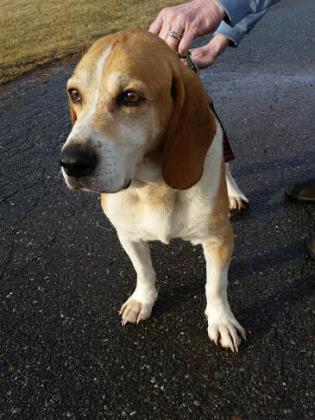The Average Foster process
Original article by S. Veigel 06/02/2015
Smoke’s adoption photo from Basset Rescue of Old Dominion
 You don’t have to be an animal trainer or otherwise be “special trained” to foster an animal. Some rescued animals need someone with a little more experience to help them get over their trauma but a great many just need a little time, guidance and care. People looking for a “pet” aren’t always willing or able to manage that transition. And that’s where fostering can make the difference between life in a kennel or finding a permanent home with caring people.
You don’t have to be an animal trainer or otherwise be “special trained” to foster an animal. Some rescued animals need someone with a little more experience to help them get over their trauma but a great many just need a little time, guidance and care. People looking for a “pet” aren’t always willing or able to manage that transition. And that’s where fostering can make the difference between life in a kennel or finding a permanent home with caring people.
Responsible animal rescue organizations with foster programs don’t just shove any animal they have your way. They try to match you with an animal you can handle within your particular circumstance. To do this they ask you to fill out a foster application and usually arrange for a volunteer to visit with you. The volunteer is someone just like you. All they’re trying to do is make contact, answer your questions, see what your situation is and find out what you’re willing and able to deal with.
After the application and “home visit” you’ll be asked to sign a “Foster Agreement”. This just spells out what is expected, options to decline an animal or adopt the animal yourself and whether or not the rescue will be responsible for veterinary bills and how much. You’ll receive information on who to contact for what and receive some pictures of an animal or animals you may be willing to foster.
Once you receive an animal to foster you’ll most likely be required to fill out a monthly report. This is not difficult. It’s usually an online questionnaire with entry space for your comments. This helps the rescue organization track an animals’ progress and readiness for adoption. When the animal is ready for adoption you may be asked to bring the animal to an adoption event or meet with someone interested in adopting the animal in your charge.
Just remember a couple of things. If you plan to foster remember you’re there to help the animal. Try to learn a few things. These organizations often have tips posted and/or will have someone speak with you if you have a problem. Understand the animal did not have the best experience with people and may be nervous when you receive them. Be patient, persistent and forgiving. And try to be patient with the process. The rescues will work hard to get the animal fostered and then adopted but they are organizing volunteers who may also have regular jobs elsewhere. The home visit may take a few days and the animal may not arrive right away unless you can pick it up directly.